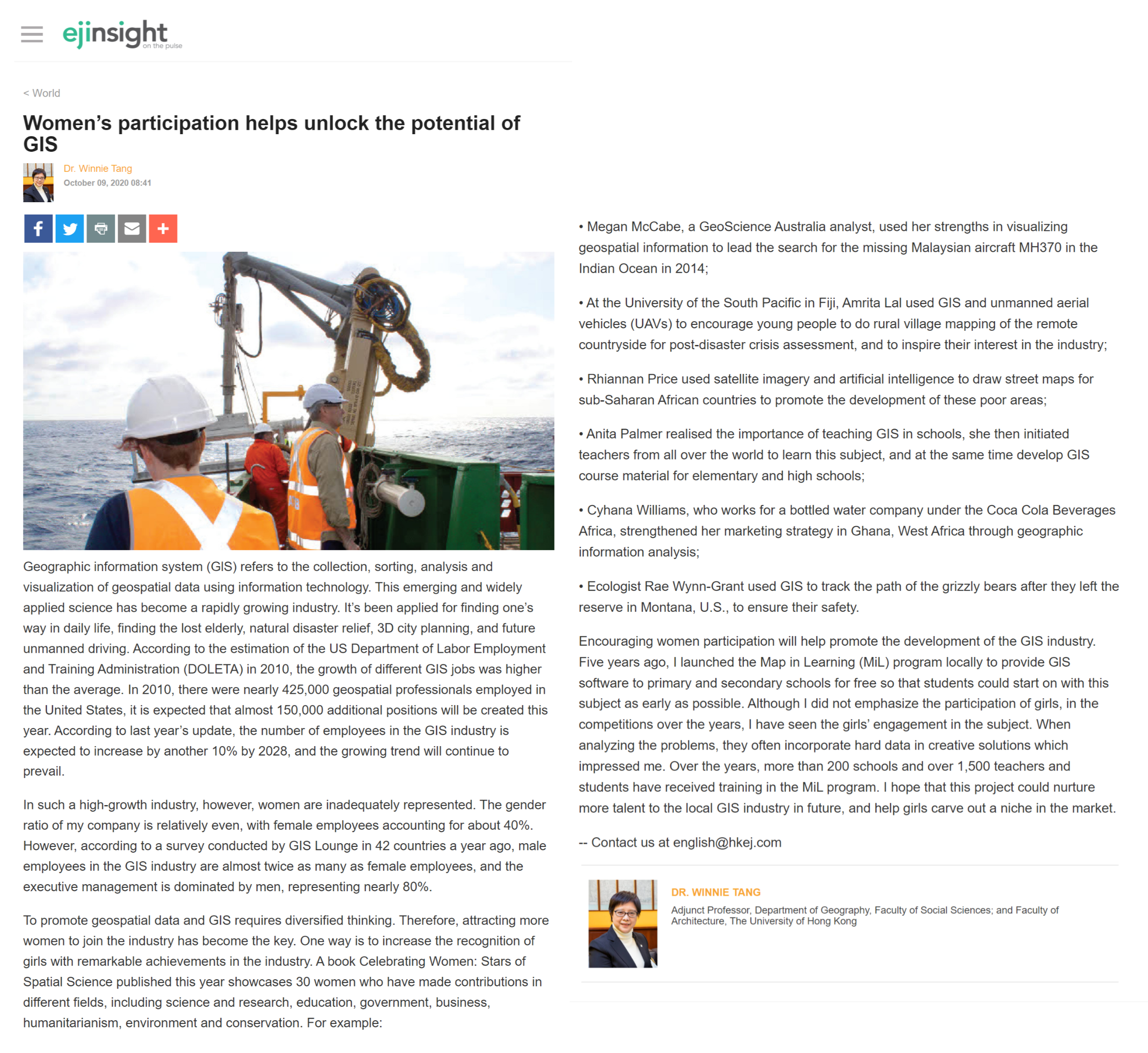網上版請按此

Women's participation helps unlock the potential of GIS
Geographic information system (GlS) refers to the collection, sorting, analysis and visualization of geospatial data using information technology. This emerging and widely applied science has become a rapidly growing industry. It's been applied for finding one's way in daily life, finding the lost elderly, natural disaster relief, 3D city planning, and future unmanned driving. According to the estimation of the US Department of Labor Employment and Training Administration (DOLETA) in 2010, the growth of different GIS jobs was higher than the average. In 2010, there were nearly 425,000 geospatial professionals employed in the United States, it is expected that almost 150,000 additional positions will be created this year. According to last year's update, the number of employees in the GIS industry is expected to increase by another 10% by 2028, and the growing trend will continue to prevail.
In such a high-growth industry, however, women are inadequately represented. The gender ratio of my company is relatively even, with female employees accounting for about 40%. However, according to a survey conducted by GIS Lounge in 42 countries a year ago, male employees in the GIS industry are almost twice as many as female employees, and the executive management is dominated by men, representing nearly 80%.
To promote geospatial data and GIS requires diversified thinking. Therefore, attracting more women to join the industry has become the key. One way is to increase the recognition of girls with remarkable achievements in the industry. A book Celebrating Women: Stars of Spatial Science published this year showcases 30 women who have made contributions in different fields, including science and research, education, government, business, humanitarianism, environment and conservation. For example:
• Megan McCabe, a GeoScience Australia analyst, used her strengths in visualizing geospatial information to lead the search for the missing Malaysian aircraft MH370 in the Indian Ocean in 2014;
• At the University of the South Pacific in Fiji, Amrita Lal used GIS and unmanned aerial vehicles (UAVs) to encourage young people to do rural village mapping of the remote countryside for post-disaster crisis assessment, and to inspire their interest in the industry;
• Rhiannan Price used satellite imagery and artificial intelligence to draw street maps for sub-Saharan African countries to promote the development of these poor areas;
• Anita Palmer realised the importance of teaching GIS in schools, she then initiated teachers from all over the world to learn this subject, and at the same time develop GIS course material for elementary and high schools;
• Cyhana Williams, who works for a bottled water company under the Coca Cola Beverages Africa, strengthened her marketing strategy in Ghana, West Africa through geographic information analysis;
• Ecologist Rae Wynn-Grant used GIS to track the path of the grizzly bears after they left the reserve in Montana, U.S., to ensure their safety.
Encouraging women participation will help promote the development of the GIS industry. Five years ago, I launched the Map in Learning (MiL) program locally to provide GlS software to primary and secondary schools for free so that students could start on with this subject as early as possible. Although I did not emphasize the participation of girls, in the competitions over the years, I have seen the girls’ engagement in the subject. When analyzing the problems, they often incorporate hard data in creative solutions which impressed me. Over the years, more than 200 schools and over 1,500 teachers and students have received training in the MiL program. I hope that this project could nurture more talent to the local GIS industry in future, and help girls carve out a niche in the market.
Dr. Winnie Tang
Adjunct Professor, Department of Geography, Faculty of Social Sciences and Faculty of Architecture, The University of Hong Kong